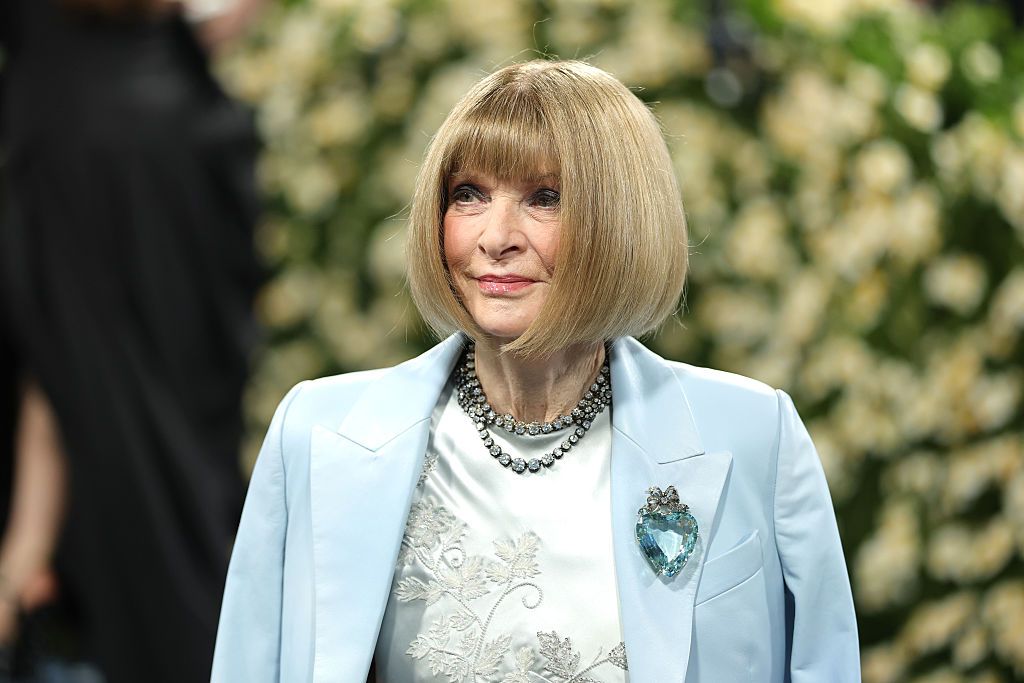“Nuclear Wintour” is over – at least in New York, where Anna Wintour, editor-in-chief of American Vogue, who inspired the Hollywood movie The Devil Wears Prada, has stepped down after 37 years – though true to form, the “sphinx-faced, super-enduring doyenne of global fashion” isn’t ending her reign completely.
Wintour, 75, will retain control of Vogue globally, says The Independent, as well as continuing as chief content officer for its parent company, Condé Nast, whose stable includes Vanity Fair, GQ, Tatler, World of Interiors and The New Yorker (which has secured an exemption from her oversight). But it marks the end of an era – not least because Wintour’s successor will never enjoy the power she relished for decades. As part of a restructuring, she is hiring a “head of editorial content” reporting directly to her.
“There will never be another Anna Wintour at Vogue,” says The Telegraph. “She’s made sure of it.” The move is the latest step in a long-running and controversial reorganisation aimed at breaking down the silos between different regional magazines. “The fun, the glory, the glamour and the heady creative independence” of being a Vogue editor has gone for good. The characters who once held these roles having been “replaced by far less expensive Wintour acolytes, plucked from the world of influencers or lower down the masthead”. There’s nothing wrong with that in theory – it reflects the economic realities of Condé Nast’s “long existential crisis”. But it highlights the group’s “descent into the banal”. Some question whether it’s even still a publishing house so much as an events company majoring on “rubber-neck, red-carpet products” such as Vogue World.
Subscribe to MoneyWeek
Subscribe to MoneyWeek today and get your first six magazine issues absolutely FREE
Get 6 issues free
Sign up to Money Morning
Don’t miss the latest investment and personal finances news, market analysis, plus money-saving tips with our free twice-daily newsletter
Don’t miss the latest investment and personal finances news, market analysis, plus money-saving tips with our free twice-daily newsletter
There’s “a mythos” surrounding Wintour who, with her trademark dark glasses and signature bob, “inspires deference akin to that given to royalty”, noted the Financial Times in 2023. “She has been likened to the Sun King, commanding total obsequience from her courtiers in the fashion domain” – more recently drawing comparison with the late Queen Elizabeth II as “empress of a diminishing empire”. But surely the Queen “never inspired such terror”? A hush would descend when Wintour stepped into the Condé Nast lobby – the first rule for any intern was “never to make eye contact”.
“Wintour came of age in the late 1960s in London”, following a privileged childhood.
She grew up in Phillimore Gardens, near Holland Park; her mother was a film critic, her father the editor of the Evening Standard, whose exacting manner earned him the nickname “Chilly Charlie”. He suggested early on that Wintour write “editor of Vogue” on a careers form at school.
“The seed might have been planted early, but Wintour’s journey to the top of the masthead was not a straight climb.” She left school at 16 and took jobs on the sales floors of Biba and Harrods before landing her first editorial job at the fashion title Harper’s & Queen, where “she impressed the staff with her designer clothes and immaculate grooming”. In her mid-20s, Wintour moved to New York, before being sent back to London to edit British Vogue in 1985. “It was there – after she fired most of the staff – that Fleet Street began to paint her as an ice queen.” Three years later, she returned to New York to take control of the US title.
Anna Wintour’s greatest mistake
Wintour earned respect for her “priceless perfectionist streak” and “genuine passion for fostering young talent”, wrote a former colleague in a Vogue profile. But perhaps her greatest mistake was simply hanging on too long, says The Telegraph. “Had she swept off a decade or so ago… her reign at Vogue would have been viewed as an incontrovertible success.” It was reported back then that she hoped to become US ambassador to the UK under Obama. What she would have made of the role is one of the great “what ifs” of transatlantic diplomacy.
This article was first published in MoneyWeek’s magazine. Enjoy exclusive early access to news, opinion and analysis from our team of financial experts with a MoneyWeek subscription.

